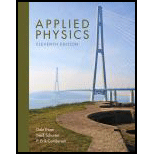
Concept explainers
Force
- a. is a vector quantity.
- b. may be different from weight.
- c. does not always cause motion.
- d. all of the above.
Find the correct option.
Answer to Problem 1RQ
The correct option is (d). “All of the above”.
Explanation of Solution
Calculation:
Force has magnitude as well as direction. Therefore, it is a vector quantity.
Weight of any object is the gravitational force acting on the body. Not all the forces acting on the body is the weight. There are other forces acting on the body that is the frictional force, the force exerted during push or pull and so on.
Force is responsible for causing motion, changing the motion of the object and preventing the object from changing its motion. However, it is not necessary that all the forces produce acceleration and cause motion. For example, if we push a wall, there will not be any motion even though we are applying a force on the wall.
Therefore, all the given options are satisfied.
Conclusion:
Hence, the correct option is (d). “All of the above”.
Want to see more full solutions like this?
Chapter 5 Solutions
Applied Physics (11th Edition)
Additional Science Textbook Solutions
Physics for Scientists and Engineers with Modern Physics
The Cosmic Perspective (8th Edition)
University Physics with Modern Physics (14th Edition)
College Physics (10th Edition)
Physics for Scientists and Engineers: A Strategic Approach with Modern Physics (4th Edition)
Sears And Zemansky's University Physics With Modern Physics
- What properties do forces have that allow us to classify them as vectors?arrow_forwardUnlike mass, weight is not a(n) ___ property. (1.4)arrow_forwardYes or no: Is each of the following quantities a vector? (a) force (b) temperature (c) the volume of water in a can (d) the ratings of a TV show (e) the height of a building (f) the velocity of a spoils car (g) the age of the Universearrow_forward
- When a person pushes on a wall, the wall pushes on the person (Newtons third law). Suppose the person puts a block of wood between his or her hand and the wall. Analyze the forces on the block of wood. Why doesnt it move?arrow_forwardDescribe the path of a moving body in the event that (a) its acceleration is constant in magnitude at all times and perpendicular to the velocity, and (b) its acceleration is constant in magnitude al all times and parallel to the velocity.arrow_forwardWhat is the unbalanced force acting on a moving car with a constant velocity of 25 m/s (56 mi/h)?arrow_forward
- Common Forces A table is placed on a rug. Then a book is placed on the table. What does the floor exert a normal force on?arrow_forwardTwo teenagers are pulling on ropes attached to a tree. The angle between the ropes is 30 . David pulls with a force of 400.0 N and Stephanie pulls with a force of 300.0 N. (a) Find the component form of the net force. (b) Find the magnitude of the resultant (net) force on the tree and the angle it makes with David’s rope.arrow_forwardA concept map is a visual representation of concepts and their connections. Create a concept map including the five specific forces listed in Table 5.1 and the four forces discussed in Section 5.10. Justify the placement of each force.arrow_forward
- An 80.0-kg passenger in an SUV traveling at 1.00103km/h is wearing a seat belt. The driver slams on the brakes and the SUV stops in 45.0 m. Find the force of the seat belt on the passenger.arrow_forwardWhile sliding a couch across a floor, Andrea and Jennifer exert forces FA and FJ on the couch. Andrea’s force is due north with a magnitude of 130.0 N and Jennifer’s force is 32 east of north with a magnitude of 180.0 N. (a) Find the net force in component form. (b) Find the magnitude and direction of the net force. (c) If Andrea and Jennifer’s housemates, David and Stephanie, disagree with the move and want to prevent its relocation, with what combined forceFDS should they push so that the couch does not move?arrow_forwardA runaway train car that has a mass of 15,000 kg travels at a speed of 5.4 m/s down a track. Compute the time required for a force of 1500 N to bring the car to rest.arrow_forward
 An Introduction to Physical SciencePhysicsISBN:9781305079137Author:James Shipman, Jerry D. Wilson, Charles A. Higgins, Omar TorresPublisher:Cengage Learning
An Introduction to Physical SciencePhysicsISBN:9781305079137Author:James Shipman, Jerry D. Wilson, Charles A. Higgins, Omar TorresPublisher:Cengage Learning Physics for Scientists and Engineers, Technology ...PhysicsISBN:9781305116399Author:Raymond A. Serway, John W. JewettPublisher:Cengage Learning
Physics for Scientists and Engineers, Technology ...PhysicsISBN:9781305116399Author:Raymond A. Serway, John W. JewettPublisher:Cengage Learning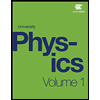 University Physics Volume 1PhysicsISBN:9781938168277Author:William Moebs, Samuel J. Ling, Jeff SannyPublisher:OpenStax - Rice University
University Physics Volume 1PhysicsISBN:9781938168277Author:William Moebs, Samuel J. Ling, Jeff SannyPublisher:OpenStax - Rice University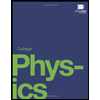 College PhysicsPhysicsISBN:9781938168000Author:Paul Peter Urone, Roger HinrichsPublisher:OpenStax College
College PhysicsPhysicsISBN:9781938168000Author:Paul Peter Urone, Roger HinrichsPublisher:OpenStax College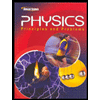 Glencoe Physics: Principles and Problems, Student...PhysicsISBN:9780078807213Author:Paul W. ZitzewitzPublisher:Glencoe/McGraw-Hill
Glencoe Physics: Principles and Problems, Student...PhysicsISBN:9780078807213Author:Paul W. ZitzewitzPublisher:Glencoe/McGraw-Hill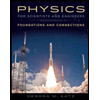 Physics for Scientists and Engineers: Foundations...PhysicsISBN:9781133939146Author:Katz, Debora M.Publisher:Cengage Learning
Physics for Scientists and Engineers: Foundations...PhysicsISBN:9781133939146Author:Katz, Debora M.Publisher:Cengage Learning





